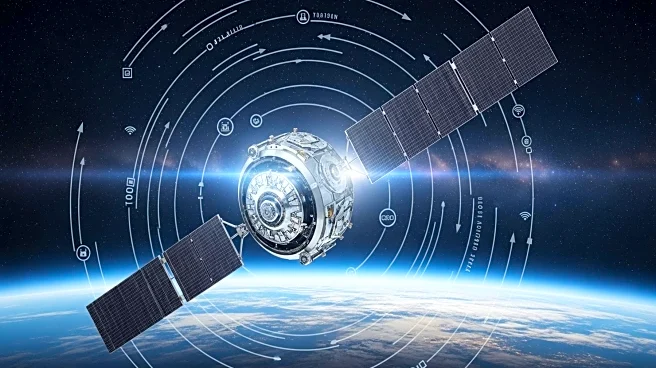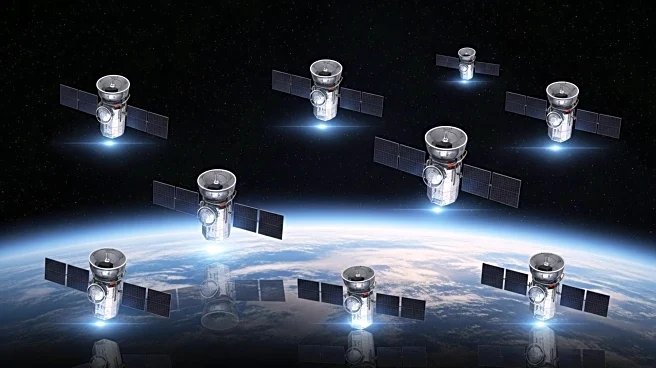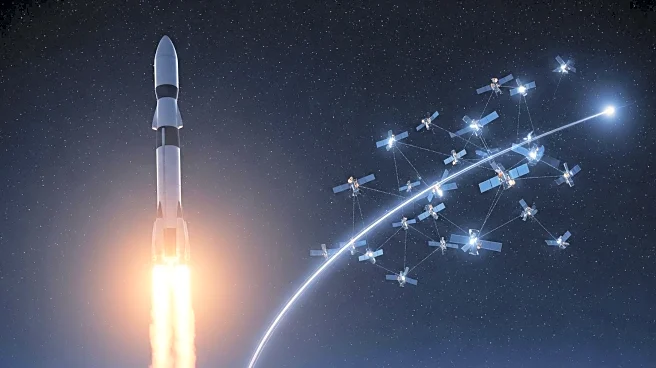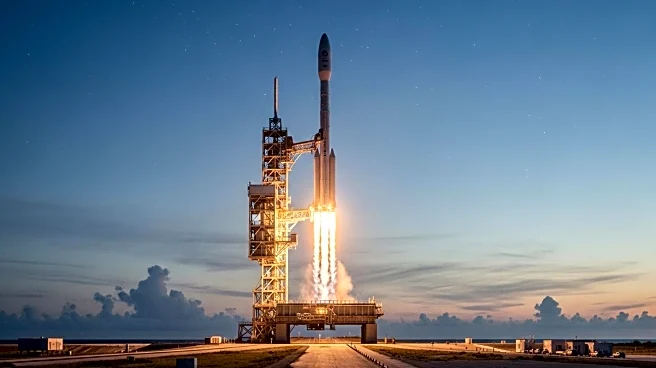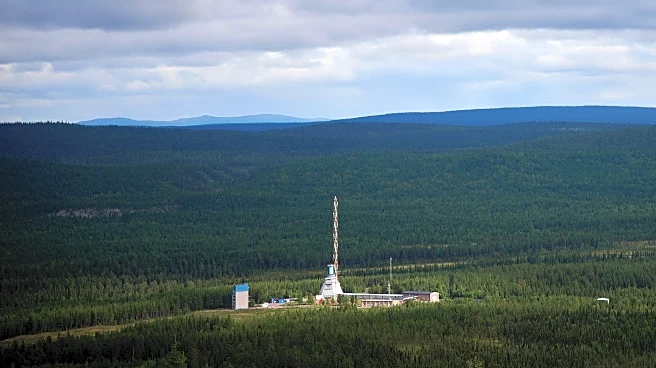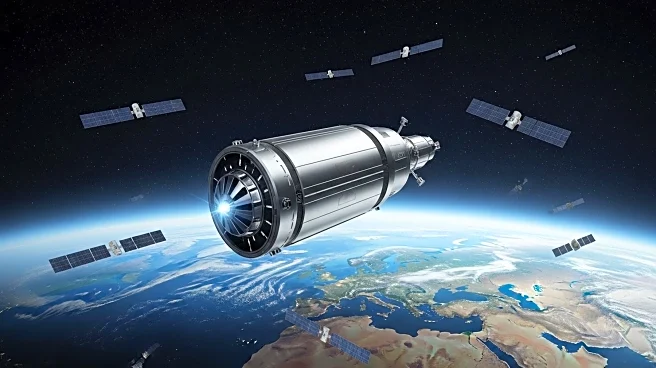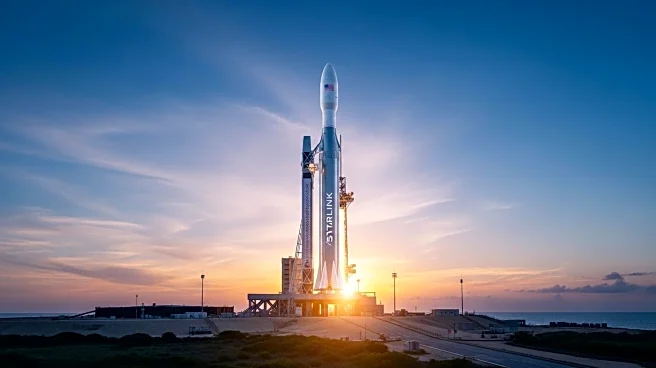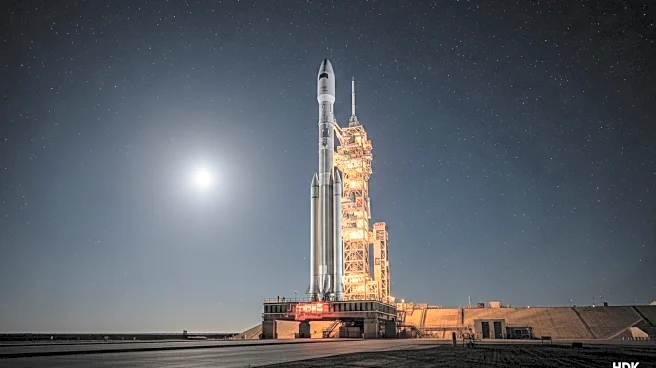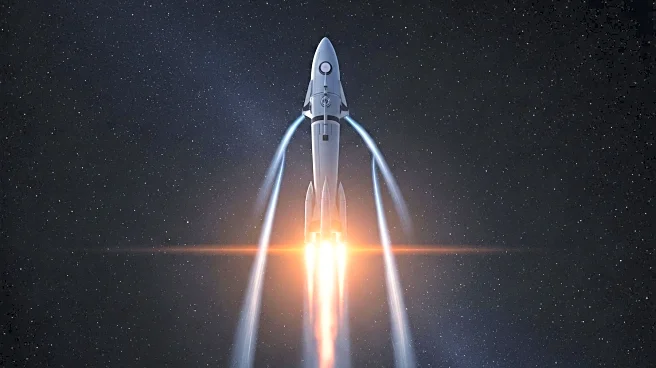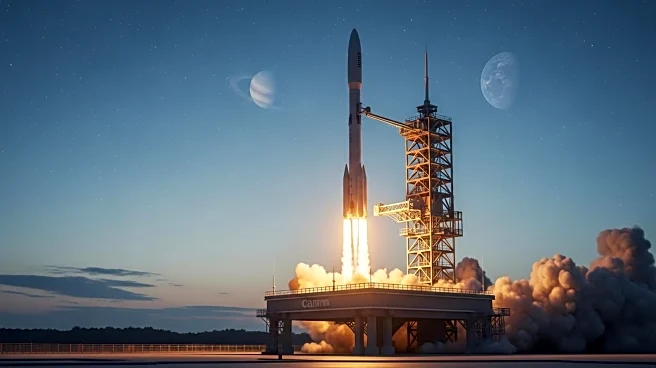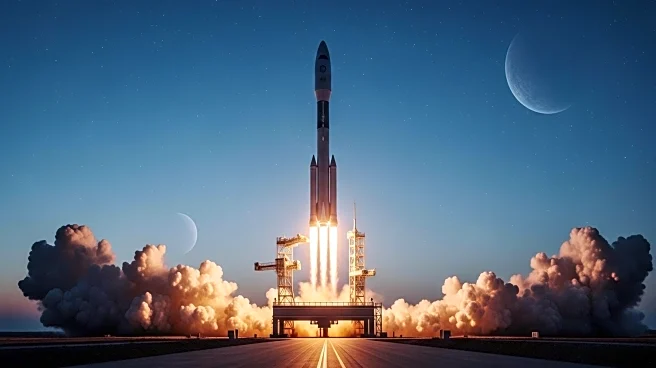What's Happening?
SpaceX successfully launched 28 Starlink satellites into low Earth orbit from Cape Canaveral Space Force Station in Florida on August 31, 2025. The launch was part of the Starlink 10-14 mission, which aims to expand SpaceX's broadband internet satellite megaconstellation. The Falcon 9 rocket carrying the satellites lifted off at 7:49 a.m. EDT and completed its mission in one hour and five minutes. This launch marked the 23rd flight of the Falcon 9 rocket's first stage, which was successfully recovered on the drone ship 'Just Read the Instructions' in the Atlantic Ocean. With this mission, the Starlink network now includes over 8,280 active satellites, contributing to SpaceX's goal of providing global internet coverage.
Why It's Important?
The expansion of SpaceX's Starlink satellite network is significant for global internet connectivity, particularly in remote and underserved areas. By increasing the number of satellites in orbit, SpaceX enhances its ability to offer high-speed internet access worldwide, potentially transforming communication infrastructure. This development is crucial for bridging the digital divide and providing internet access to regions lacking traditional broadband services. Additionally, the successful recovery of the Falcon 9 rocket's first stage demonstrates SpaceX's continued innovation in reusable rocket technology, which reduces launch costs and environmental impact.
What's Next?
SpaceX plans to continue its Starlink satellite launches, with the next mission scheduled for September 3, 2025, from Cape Canaveral Space Force Station. This upcoming launch will deploy another batch of Starlink satellites, further expanding the network. As SpaceX progresses with its launch schedule, stakeholders in the telecommunications industry and global internet users will closely monitor the impact of Starlink's growing constellation on internet accessibility and competition in the broadband market.
